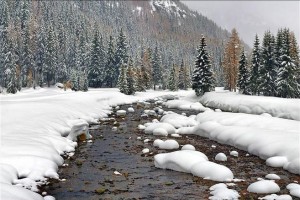Recently I was part of a discussion group that was looking at the present and future impact of reduced oil prices on the economy of Southwest Colorado. In June of 2014, oil was priced at around $113 per barrel. Average oil production costs in the U.S. are $36 per barrel. (By contrast, Saudi Arabia can pump a barrel of oil for $10 on average.)Today oil sits at slightly over $38, a decline of 66% from the summer of 2014. Drilling rig counts are way down from one year ago. Many large, multi-national oilfield service companies have laid off thousands of workers, a number of mid-sized oil producers have filed bankruptcy and the roaring housing market in the Houston area has slowed down considerably. From what we analyzed of the futures markets, most forecasters are projecting oil to be under $65 for the next two to three years. Will there be more layoffs? Will the weak energy sector negatively impact other industries? Will we see fewer visitors to Southwest Colorado from Texas, Oklahoma and Louisiana in the years ahead? Good questions to ponder when you consider how important those areas have been in the tourism economy of Southwest Colorado.
According to a 2014 study by Longwoods International, Colorado residents were the top vacationers in their own state, followed by California, Texas, Illinois, Florida and New York. Typically the Vail Valley, Summit County and Aspen areas see a large number of visitors from Illinois, Florida and New York while visitors from Arizona and New Mexico are more prevalent in the southwest region of the state. The number of Californians visiting this part of the state has declined since the end of the recession in 2009. From our informal surveys, after our own residents, Texas represents the largest percentage of visitors to the Pagosa Springs area. We are one of the closer mountain resort areas for those Texans that drive to their vacation spots. Snow conditions in the Ruidoso area have been pretty marginal over the last ten years, the Angel Fire Ski Area and Taos Ski Areas have suffered from poor snow in recent years and more Texans have opted to travel a little further to Wolf Creek and the Pagosa Springs area. During summer months and peak winter periods you can see the influx of Texans by looking at the license plates in the City Market parking lots and along Pagosa Street downtown. You can see the same thing during the fall hunting season.
I can tell you that the ongoing glut of supply and downward price pressure has certainly reduced the number of qualified ranch buyers looking at one of the finer recreational ranches we are involved in. (Photo Above). We toured the ranch with a buyer from Texas that came close to signing a contract but the continuing weakness in the oil industry caused him to retreat to the sidelines. That was the end of last summer and prices have declined further since them.
Next Article-How many properties did Texans purchase in our area last year?


